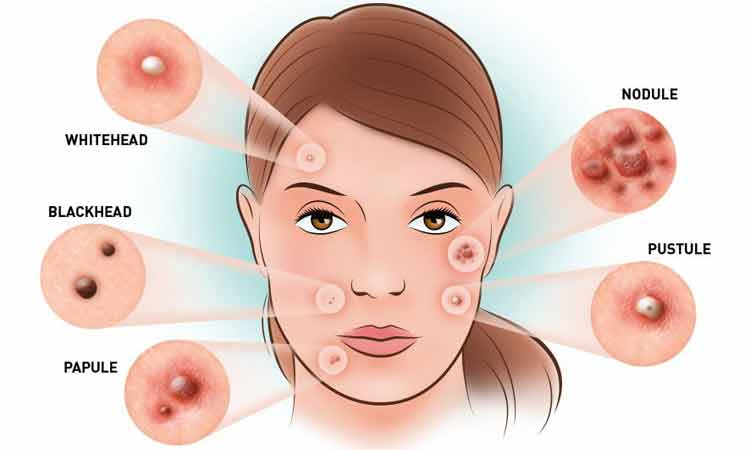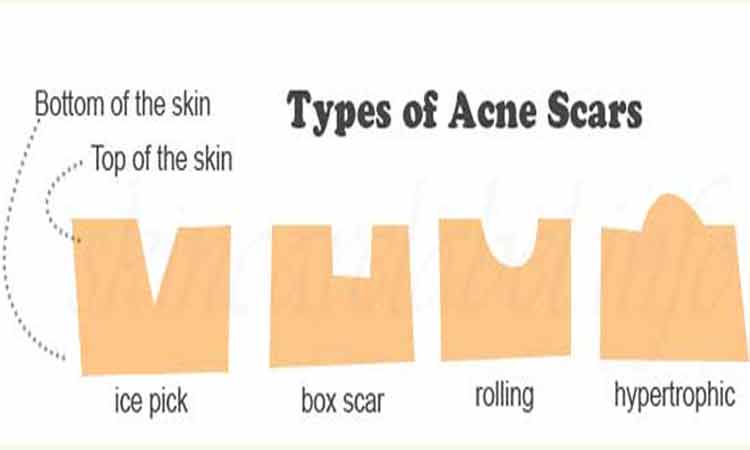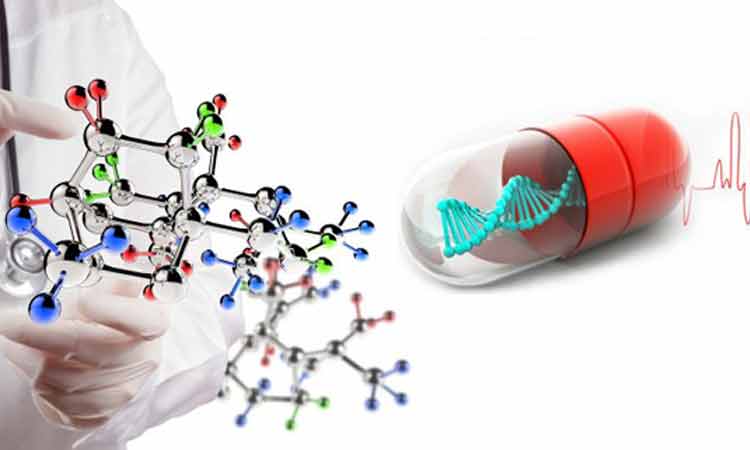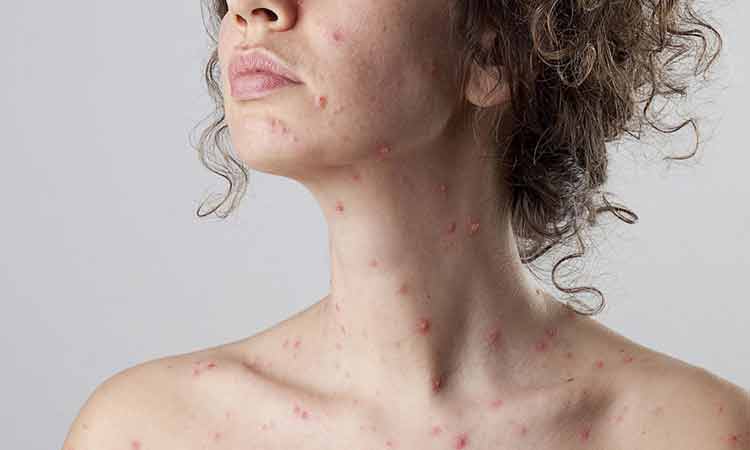5 Causes Of Blemishes On The Face | Skin Beauty
A blemish is a mark or discoloration on you skin.
And, certain factors contribute to their formation on the face.
Acne leaves behind atrophic, hypertrophic, or kleoid scars.
Aging causes liver spots, purpura, and seborrheic keratoses.
Sun exposure causes melasma and darkens freckles.
Genetic conditions cause darier disease, fabry disease, birthmarks, cafe au lait spots, Mongolian spots, and Hemangiomas.
Finally, skin conditions like rosacea, chickenpox, and facial herpes leave behind marks and scars.

The word “blemish” has now become synonymous with acne scars.
And, to be fair, if you’ve just noticed discoloration or marks on your face, acne scars are the most probable culprits.
But, a blemish is broadly defined as any mark or discoloration on your skin.
By this understanding, blemishes include acne scars, dermatosis papulosis, hypopigmentation, lentigenes, melasma, rosacea, vascular proliferations, and other facial scars.
Here are seven factors that might be behind any marks on your face.

1. Acne
Acne is one of the most common and frustrating skin conditions.
Causes of acne itself could be hormonal, genetic, or due to certain medications.
Acne formed due to inflammation of the hair follicles and sebaceous (oil producing) glands of the skin.
And, this inflammation is caused due to bacteria (that is normally present in the hair follicles) multiplying in the blocked hair follicles.

There are two basic types of acne scars.
- Atrophic scars: These scars are caused due to a net loss or gain of collagen, the protein that gives skin its elasticity and texture.
These type of scars are further divided into
- Ice-pick scars: These scars are deep, narrow, and pitted. They make up for 60–70% of all cases of acne scarring.
- Rolling scars: These scars have broad depressions with a sloping edge. They make up for 20–30% of all acne scars.
- Boxcar scars: These scars have broad depressions with sharply defined edges. They make up for 15–25% of all acne scars.
- Hypertrophic or Kleoid scars: These scars are pink in color, thick, firm, and lumpy.
They are rare and caused due to excess collagen deposition and decreased collagenase activity.
Acne scarring is completely natural and doesn’t need to be “fixed.”
However, if you’d still like to treat them, there are a lot of medical, surgical, and laser options available.

2. Aging
Grey hair and wise words aren’t the only things that come with aging.
Certain blemishes are the hallmark of aging.
And, these blemishes can be categorized into three types
- Liver spots: These are caused due to excessive sun exposure or other forms of ultraviolet light. They are characterized by flat brown spots on the skin and are harmless.
- Purpura: This condition occurs when tiny blood vessels called capillaries break and leak blood into the skin. This blemish is red and flat at first and gradually turns brown or purple.
- Seborrheic Keratoses: These blemishes can be smooth with tiny, round, pearl-like formations embedded in them, rough and warty, or brown and black. Their cause is unknown and they usually appear on the head, neck, or trunk.
Although, these spots require no treatment, certain laser and surgical procedures might help fade them.
Be sure to opt for dermatologist-approved procedures and not cosmetic treatment in private outlets.

3. Sun Exposure
Here’s more reason for you to stock up on some sunscreen.
Apart from liver spots, sun damage might cause melasma.
This condition is characterised irregular dark patches.
It is common in pregnant women and women in their 20s and 30s.
It is important to note that hormonal changes due to contraceptives, pregnancy, or postmenopausal hormone therapy as well as low levels of thyroid hormone might intensify melasma.
Besides this, sun exposure might darken freckles as well.
Although they are generally no cause for worry, they might indicate an increased risk for developing skin cancer.

4. Genetics
Sometimes, the cause of blemishes on your skin might be in your DNA.
Apart from acne, certain genetic disorders that might contribute to marks on your face include
- Darier disease: This condition leaves wart-like blemishes on the forehead.These blemishes are usually yellowish in color, hard to the touch, mildly greasy, and might emit a strong odor.Sun exposure, injuries, scratching, and ingestion of certain medications might aggravate this condition.
- Fabry disease: This disorder is caused due to the buildup of a particular type of fat, globotriaosylceramide, in the body’s cells. It leads to the formation of angiokeratomas, clusters of small and dark red spots, on the skin.
Other gene-driven blemishes include birthmarks, cafe au lait spots (flat and brown), Mongolian spots (blue or dark green), and hemangiomas (red or pink).
These usually fade with time or shrink in size as one ages.

5. Skin Conditions
Certain conditions that affect the skin leave behind blemishes.
And, apart from seborrheic keratoses, which come with ageing, skin conditions that cause marks on the face include
- Rosacea: This condition leads to reddened skin and pimples that leave behind marks. The cause for the condition itself, is unknown.
- Chickenpox: This common condition is caused due to varicella zoster virus. And, it leaves behind atrophic scars that might need treatment to fade.
- Facial herpes: This condition is caused by herpes simplex virus type 1 and leaves behind scars around the lips, nose, and cheeks. Certain surgical procedures and topical creams might fade blemishes caused by herpes.

In children, hypopigmentation can occur due to conditions like pityriasis alba, vitiligo, nevus depigmentosus, and tinea versicolor.
And, in order to get a proper diagnosis, it’s important that you consult a professional.
With all of these factors contributing to blemishes, it might seem like there’s no way to avoid them.
And, having stated that, it’s important to remember that they’re common and entirely normal.
However, if any mark on your face seems suspicious and out of the ordinary to you, then you should definitely consult a professional at the earliest.
Recent Posts
-
The Power of Exosomes in Skincare
Exosomes in Skin Care: The Future of Exosome and Regenerative Medicine in Skin Science Skincare inn …Oct 17th 2025 -
Steps for a Skincare Routine
6 Steps to a Proper Skin Care Routine: Your Esthetician-Approved Guide to The Best Skin If you've ev …Aug 11th 2025 -
Treatment of Hyperpigmentation
How to Treat the Appearance of Hyperpigmentation This Summer: Your Complete Guide Summer sun is wond …Jul 17th 2025




